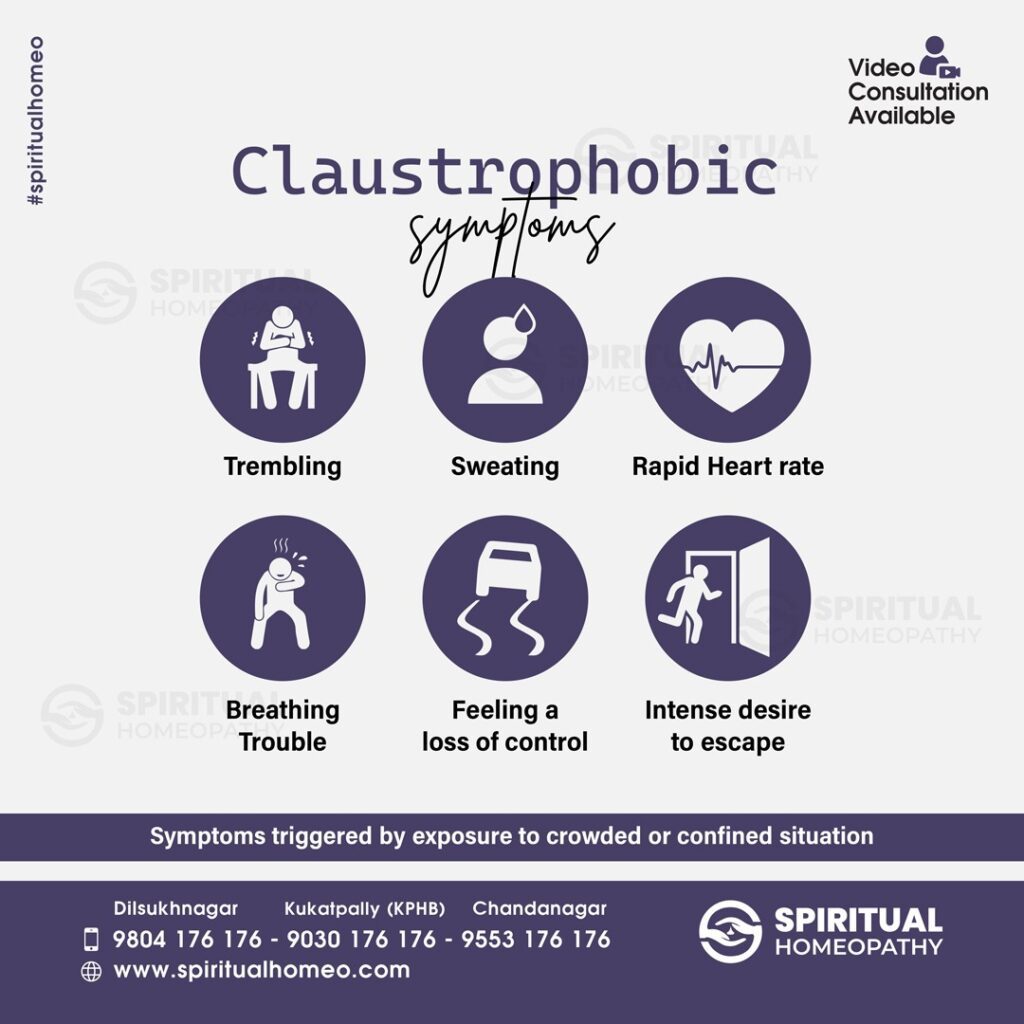Claustrophobia is a specific phobia characterized by an intense fear or anxiety related to being in enclosed or confined spaces. Individuals with claustrophobia may experience significant distress or panic attacks when in situations where they perceive a lack of escape or control. Common enclosed spaces that can trigger claustrophobia include elevators, airplanes, crowded rooms, tunnels, or small rooms with limited exits.
Here are some signs and symptoms often associated with claustrophobia:
-
Anxiety or fear: Individuals with claustrophobia may feel a sense of unease, dread, or terror when in confined spaces or even when thinking about being in such situations.
-
Panic attacks: Claustrophobia can lead to panic attacks, which involve sudden and intense feelings of fear or discomfort. Panic attacks may include symptoms such as rapid heartbeat, shortness of breath, chest pain, sweating, trembling, lightheadedness, or a sense of impending doom.
-
Avoidance behavior: People with claustrophobia may actively avoid situations or places that trigger their fear. This avoidance can impact daily activities and may lead to significant disruptions in work, social interactions, or travel.
-
Physical symptoms: Claustrophobia can manifest with various physical symptoms, including rapid breathing, increased heart rate, sweating, nausea, dizziness, trembling, or feeling faint.
-
Psychological distress: Claustrophobia can cause significant emotional distress, leading to feelings of helplessness, embarrassment, or loss of control.
Managing claustrophobia involves a combination of self-help strategies and professional assistance. Here are some approaches that can be helpful:
-
Breathing and relaxation techniques: Deep breathing exercises, progressive muscle relaxation, or mindfulness techniques can help reduce anxiety and promote relaxation when facing triggering situations.
-
Cognitive-behavioral therapy (CBT): CBT is a common therapeutic approach used to treat phobias. It involves identifying and challenging irrational thoughts and beliefs related to confined spaces and developing coping strategies to manage anxiety.
-
Gradual exposure therapy: This technique involves gradually exposing oneself to increasingly challenging situations related to claustrophobia. The exposure is done in a controlled and supportive manner to help desensitize the fear response.
-
Homeopathic Medications: In some cases, doctors may prescribe certain homeopathic medications to help manage symptoms associated with claustrophobia. These medications are usually used in conjunction with therapy.
If claustrophobia significantly impacts daily functioning or quality of life, it is recommended to seek professional help who can provide a proper appropriate treatment plan.
Note that the strategies mentioned above are general recommendations, and treatment should be tailored to individual needs.



